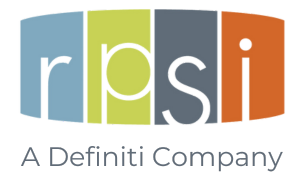Plan Sponsor Outlook – 1st Quarter 2024
Inside the Minds
Survey Reveals Shifting Employee Priorities Regarding Financial Needs
Employees are prioritizing short-term financial needs over retirement savings, according to findings from Bank of America’s 13th Annual Workplace Benefits Report. The survey found fewer employees are prioritizing long-term retirement savings (31%, down from 45% in 2022) as a growing number are focusing on short-term financial needs. Those needs include paying off credit card debt (16% vs. 11% in 2022) and saving for the unexpected (13% vs. 8% in 2022).
Reviewing how your plan aligns with workplace trends can help you and your plan advisor better assist employees in pursuing financial wellness with your retirement plan. The following are two key trends to consider.
Feelings About Financial Wellness
Given the inflation and economic uncertainty of the past few years, 64% of employees are stressed about their finances. In addition, only 42% of employees rate their financial wellness as good or excellent, the lowest since 2010. Interestingly, 96% of employers feel somewhat or extremely responsible for their employees’ financial wellness. However, just 2 out
of 5 offer financial wellness programs.
Plan Sponsor Considerations: According to the survey, 42% of employers offering resources to support overall well-being have seen a reduction in employee stress. As a result, consider expanding the resources you offer employees based on what they highlight as most important in helping them better manage their finances. Those resources might include guidance and budgeting tools, guaranteed income plan benefits, tips for developing good financial habits, advice from a professional and expanded educational opportunities.
Demographic Differences Between Men and Women
The survey reports that while women have been gaining confidence about their financial wellness over the past few years, economic uncertainty is affecting the well-being of women more than men. Only 38% of women have felt financially well in 2023, a significant decrease from 2022 (55%) and a five-year low. While men have experienced a similar trend, women still trail men overall. In 2022, 59% of men felt financially well, which decreased to 48% in 2023.
Plan Sponsor Considerations: The survey recommends providing women employees with easy access to educational resources and tools to help them understand the actions they can take to improve their financial wellness. Women are more likely to value workplace benefits that offer greater flexibility, allowing for increased work-life balance and ability to attend to caregiver responsibilities. When it comes to addressing other demographic differences and needs (such as ethnic or generational groups), the survey suggests offering tools that can provide a more individualized experience for your employees and help them take action to improve their financial health.
Bank of America’s 13th Annual Workplace Benefits Report can be found at https://tinyurl.com/4c8bbjx7. The survey also covers trends regarding employee retirement healthcare savings, Social Security awareness and knowledge, the impact of caregiving on the workforce and much more.

The American Way
Keeping Your Investment Menu Competitive and Relevant
As a plan sponsor, it’s prudent to compare how your investment menu looks compared to peers. If you’re using your retirement plan as a recruitment and retention tool, you want to make sure you are competitive with what you are offering to employees. And from a fiduciary standpoint, it’s important to be in line with industry standards. It’s also important to remember that there is not a one-size-fits-all investment lineup. As a fiduciary, you are responsible for offering a lineup that is appropriate for your participants.
Vanguard’s How America Saves 2023 report provides a comprehensive snapshot of plan investment menu offerings, participant usage and emerging trends across the country. Consider using this report as part of your ongoing investment review meetings with your advisor to help ensure that your offering remains competitive and meets the needs of your employees. Next are some key findings from the 2023 study.
Investment Menu Size
According to Vanguard’s report, if you count target date and target risk funds as a single offering, the median investment menu contains 16 options (the number jumps to 27.2 if you count each target fund offered separately). Only 8% of plans offered more than 25 distinct investment options, whereas 9% of plans offered 10 or fewer.
The number of funds used by participants in retirement plans has declined over the past decade, likely due to the creation of target date and target risk funds. The average number of funds used by participants is currently 2.4. The survey advises the importance of finding the right balance of fund options — enough so that your employees can be adequately diversified, but not so many as to cause choice overload and confusion as they go through the selection process.
Types of Options Offered
Nearly all Vanguard defined contribution plans offered an array of investment options covering four major investment categories: equities, bonds, balanced funds (including target-date and target-risk strategies) and money market or stable value options. Diversified equity funds continued to be the most popular type of fund offered. Ninety-six percent of plans now offer target-date or target-risk funds.
Types of Options Used
A balanced fund (including target-date and other balanced funds) is the most common participant holding (87% of all participants), followed by a diversified domestic equity fund (30% of all participants). Only 1 in 5 plans offer a self-directed brokerage option. Of those plans, only 1%
of participants use it, representing 2% of plan assets.
Alternative Investments
Alternative investments have very low usage in Vanguard’s retirement plans. Alternative investments include things such as private equity, hedge funds, real estate, commodities and energy. In general, plan sponsors have been hesitant to offer alternatives due to the lack of participation, operational challenges and associated costs (particularly potential litigation risk and cost).
Vanguard’s How America Saves 2023 can be found at https://tinyurl.com/y5f3pc3b. It includes comprehensive data on all aspects of retirement plan design, features and usage.

Plan Sponsors Ask…
For Form 5500 purposes, 401(k) plans with 100 or more participants at the beginning of the plan year are considered a “large plan,” whereas plans with fewer participants are considered a “small plan.” Large plans must file an audit report with their Form 5500 while most small plans do not.
Recent U.S. Department of Labor (DOL) changes to the Form 5500 now allow plans to count fewer participants when determining the need for an audit. Under the previous method, 401(k) plans had to count all eligible participants, regardless of whether they had an account balance. With the new method (which is effective for plan years beginning on or after January 1, 2023), plans must only count participants with an account balance. The DOL expects the change to eliminate the audit requirement for 20,000 small business 401(k) plans. This is good news considering the cost, time and effort of an audit for employers. Small businesses should understand how the method will affect their 401(k) plan’s audit status this year. To view a summary of the DOL’s changes to Form 5500, go to: https://tinyurl.com/3a95jakb.
Following a pause for three years during the COVID-19 pandemic, federal loan repayments resumed on October 1 of last year. After surveying more than 2,100 federal student loan borrowers, Corebridge Financial found that 75% said that resuming student debt payments will impact their ability to save for retirement. In order to make payments, 22% said they plan to reduce how much they save for retirement, and 29% plan to reduce their emergency savings. And while many assume younger employees are impacted the most by student loans, a new survey by Nationwide found that more than 1 in 10 employees aged 45 and older currently have student loan debt. Most of these individuals (61%) agree that the reinstatement of student loan repayments has negatively impacted their financial stability and long-term planning. For more in-depth discussion, including considerations for plan sponsors, check out this article: “Student Loan Repayments Expected to Derail Employees’ Retirement Savings” (PLANSPONSOR, September 27, 2023.” (https://tinyurl.com/2p8yrd69).
An excellent resource is Fidelity’s annual Plan Sponsor Attitudes survey. The 2023 research report, released in August, revealed plan sponsors value improved participant outcomes (44%) over any other service offered by their plan advisor. Other notable drivers of value were time spent on plan and administrative support (43%) and providing objectivity when making plan choices (41%). The survey covers a number of other topical areas, including evolving investment menus and plan designs, as well as additional ways advisors can have an impact with plan sponsors and their employees. For more on the 2023 study, go to: https://tinyurl.com/53fy4r44.
Pension Plan Limitations for 2024
- 401(k) Maximum Elective Deferral – $23,000* (*$30,500 for those age 50 or older, if plan permits)
- Defined Contribution Maximum Annual Addition – $69,000
- Highly Compensated Employee Threshold – $155,000
- Annual Compensation Limit – $345,000

Plan Sponsor’s Quarterly Calendar
- If a plan audit is required in connection with the Form 5500, make arrangements with an independent accountant/auditor for the audit to be completed before the Form 5500 due date (calendar-year plans).
- Audit first quarter payroll and plan deposit dates to ensure compliance with the DO L’s rules regarding timely deposit of participant contributions and loan repayments.
- Verify that employees who became eligible for the plan between January 1 and March 31 received and returned an enrollment form. Follow up on forms that were not returned.
- Monitor the status of the completion of Form 5500, and, if required, conduct a plan audit (calendar-year plans).
- Issue a reminder memo or email to all employees to encourage them to review and update, if necessary, their beneficiary designations for all benefit plans by which they are covered.
- Perform a thorough annual review of the plan’s Summary Plan Description and other enrollment and plan materials to verify that all information is accurate and current, and identify cases in which revisions are necessary.
- Provide quarterly benefit/disclosure statement and statement of plan fees and expenses actually charged
to individual plan accounts during the prior quarter, within 45 days of the end of last quarter. - By May 15 (or 45 days after the end of the quarter) participant-directed defined contribution plans must supply participants with a quarterly benefit/disclosure statement and a statement of plan fees and expenses actually charged to individual plan accounts during the first quarter.
- Begin planning an internal audit of participant loans granted during the first six months of the year. Check for delinquent payments and verify that repayment terms and amounts borrowed do not violate legal limits.
- Confirm that Form 5500, and a plan audit if required, will
be completed prior to the filing deadline or that an extension of time to file will be necessary (calendar-year plans). - Review plan operations to determine if any qualification failures or operational violations occurred during the first half of the calendar year. If a failure or violation is found, consider using an Internal Revenue Service or DOL self-correction program to resolve it.
- Check for any ADP/ACP refunds due to highly compensated employees for eligible automatic contribution arrangement plans to avoid an employer excise tax.
Consult your plan’s financial, legal or tax advisor regarding these and other items that may apply to your plan.
Kmotion, Inc., 12336 SE Scherrer Street, Happy Valley, OR 97086; 877-306-5055; www.kmotion.com
©2023 Kmotion, Inc. This newsletter is a publication of Kmotion, Inc., whose role is solely that of publisher. The articles and opinions in this publication are for general information only and are not intended to provide tax or legal advice or recommendations for any particular situation or type of retirement plan. Nothing in this publication should be construed as legal or tax guidance, nor as the sole authority on any regulation, law, or ruling as it applies to a specific plan or situation. Plan sponsors should always consult the plan’s legal counsel or tax advisor for advice regarding plan-specific issues.
This material is intended to provide general financial education and is not written or intended as tax or legal advice and may not be relied upon for purposes of avoiding any Federal tax penalties. Individuals are encouraged to seek advice from their own tax or legal counsel. Individuals involved in the estate planning process should work with an estate planning team, including their own personal legal or tax counsel.
